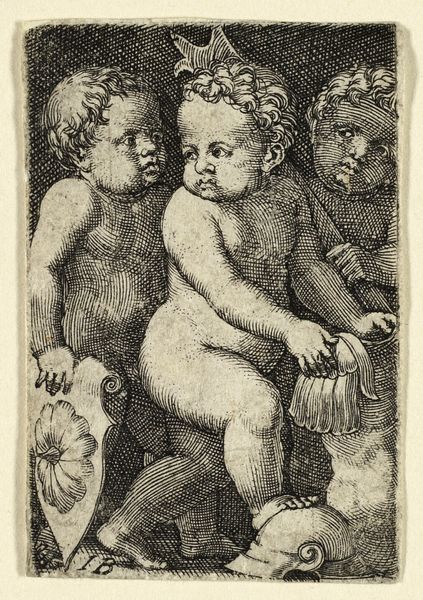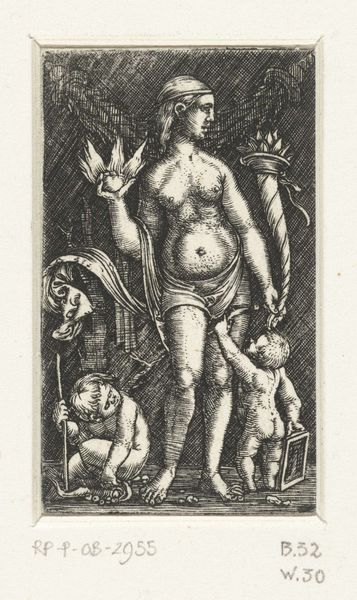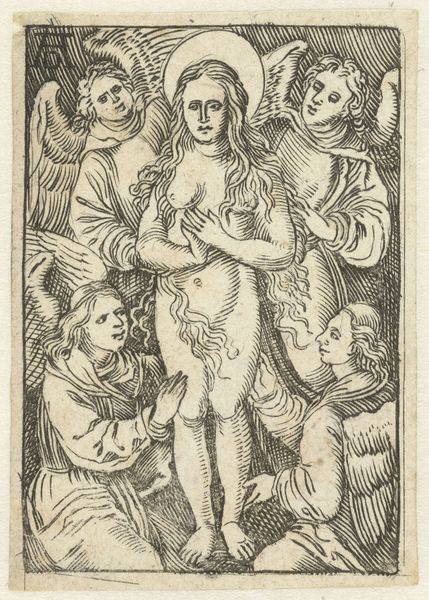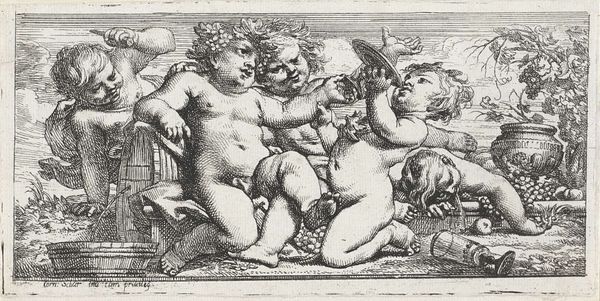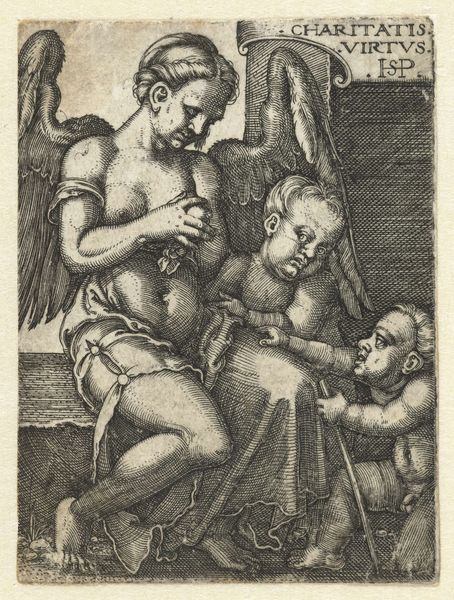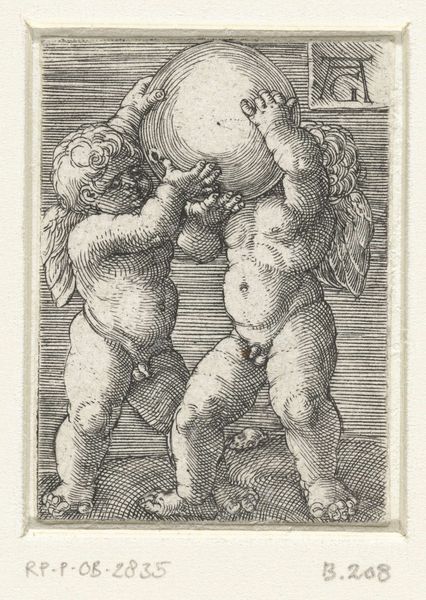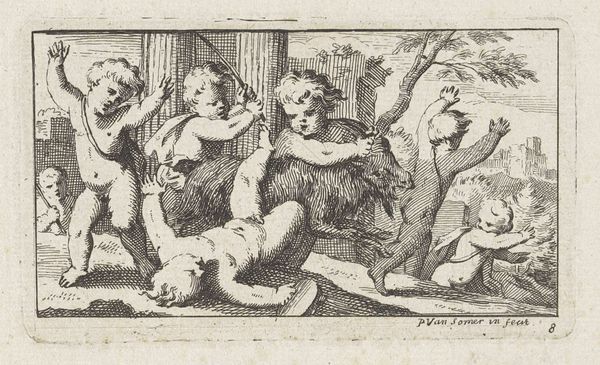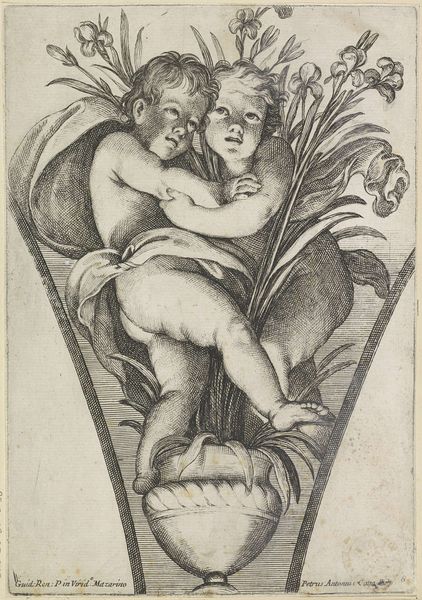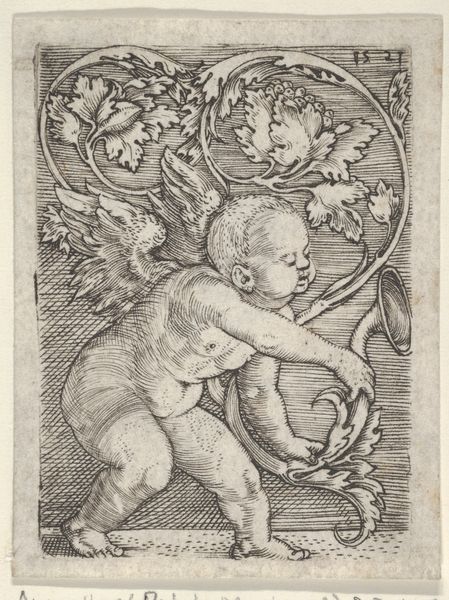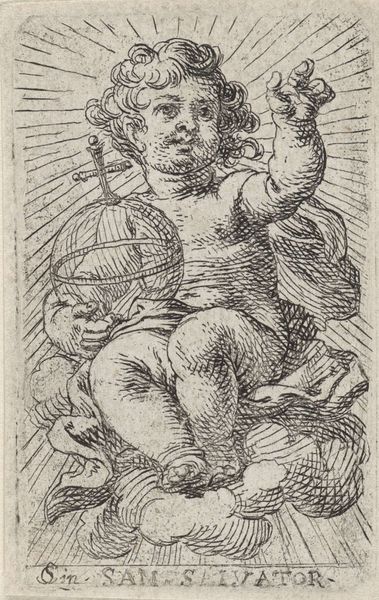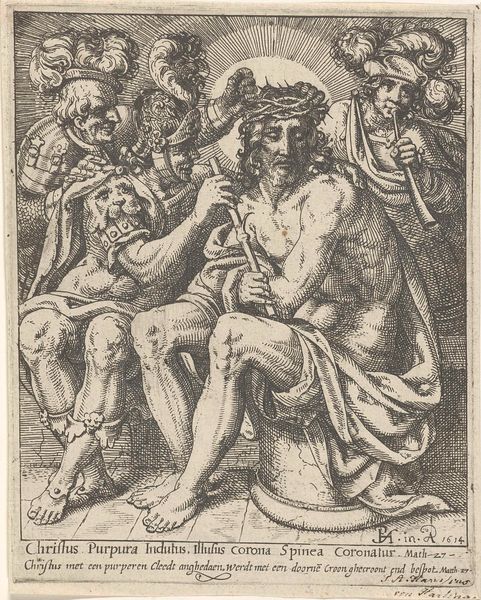
Dimensions: height 51 mm, width 36 mm
Copyright: Rijks Museum: Open Domain
Curator: Here we have "Three Putti with Armour," an engraving crafted between 1525 and 1550 by Sebald Beham, now residing at the Rijksmuseum. What strikes you initially? Editor: My first impression? These aren't exactly cherubic angels. There's a weightiness to their expressions, almost a sense of burdened seriousness, despite the chubby cheeks and playful armor. Curator: It’s a compelling tension. Beham, as part of the German Renaissance and Reformation, lived through immense social upheaval. This print appears during a time of challenging shifting views on children's innocence and potential inherent sin. How do we then portray children as symbols? Editor: Right, these aren’t your typical, innocent putti. The helmet and shield are classic symbols of power and defense. It almost hints at this notion of innocence already burdened, or perhaps co-opted, by the potential for earthly conflict. The symbolism asks, at what stage of development are we inducted into ideology? Curator: The socio-political implications here can not be dismissed. There’s a debate surrounding iconoclasm happening during Beham’s time. Are the putti stand-ins, proxies, for grander ideas, like, say, religious icons now stripped bare? What kind of political reading could you interpret, based on that reading? Editor: I find it incredibly provocative, in the face of the Reformation's views on corruption, this composition makes me think of an emerging sense of children shouldering cultural guilt, not inheriting simple innocence. It plays on earlier Renaissance ideas, subverting visual and philosophical idioms by giving new psychological textures. Curator: Absolutely, and that interpretation adds another layer to Beham’s visual commentary. Thank you for offering a fresh angle of analysis. Editor: It's a perspective built by visual semiotics. Seeing this now offers a new avenue of consideration on Reformation social anxieties and historical memory.
Comments
No comments
Be the first to comment and join the conversation on the ultimate creative platform.
